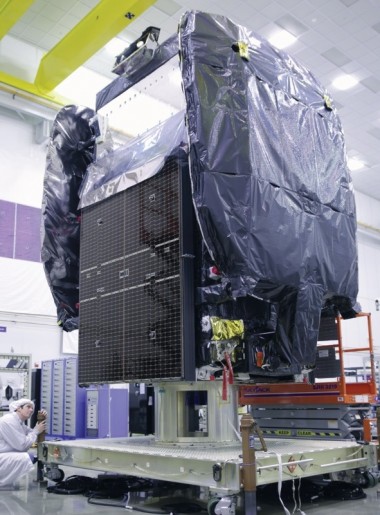Amazonas 4A

Amazonas 4A, built by Orbital Sciences Corporation and operated by Hispasat, is a commercial communications satellite that will cover South America to provide a range of communications services.
The spacecraft is based on Orbital’s GEO STAR-2.4 satellite platform that has extensive flight heritage in Geostationary Satellites and is capable of hosting medium-power communication payloads including hybrid systems up to 5kW. Amazonas 4A has a launch mass of about 3,000 Kilograms. The satellite uses two four-panel solar arrays featuring Ultra-Triple-Junction Gallium Arsenide Solar Cells for power generation and two 5,053 Watt-Hour Li-Ion batteries and avionics for power storage and distribution. Navigation and attitude data is provided by state of the art system while attitude and precise Earth-pointing is accomplished by reaction wheels part of a zero momentum system and a chemical attitude control system using Hydrazine monopropellant.
The main propulsion system is a bipropellant system featuring the IHI BT-4 engine that consumes Unsymmetrical Dimethylhydrazine fuel and Nitrogen Tetroxide oxidizer. BT-4 was developed by IHI Aerospace, Japan and has a dry mass of 4 kilograms and a length of 0.65 meters. The engine provides 450 Newtons of Thrust. The propellants are stored in spherical tanks that are pressurized with Helium.
Amazonas 4A hosts an all Ku-Band payload consisting of 24 transponders with two groups of 15-for-12 LCTWTAs. Two 2.5 x 2.7 meter single shell super elliptical deployable reflectors are installed on the satellite.
The satellite will be stationed at 61 degrees west to provide coverage of the entire continent of South America. Amazonas 4A will provide voice, wireless backhaul, internet, and media applications services. The spacecraft has an expected life span of 15 years.
